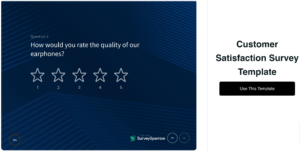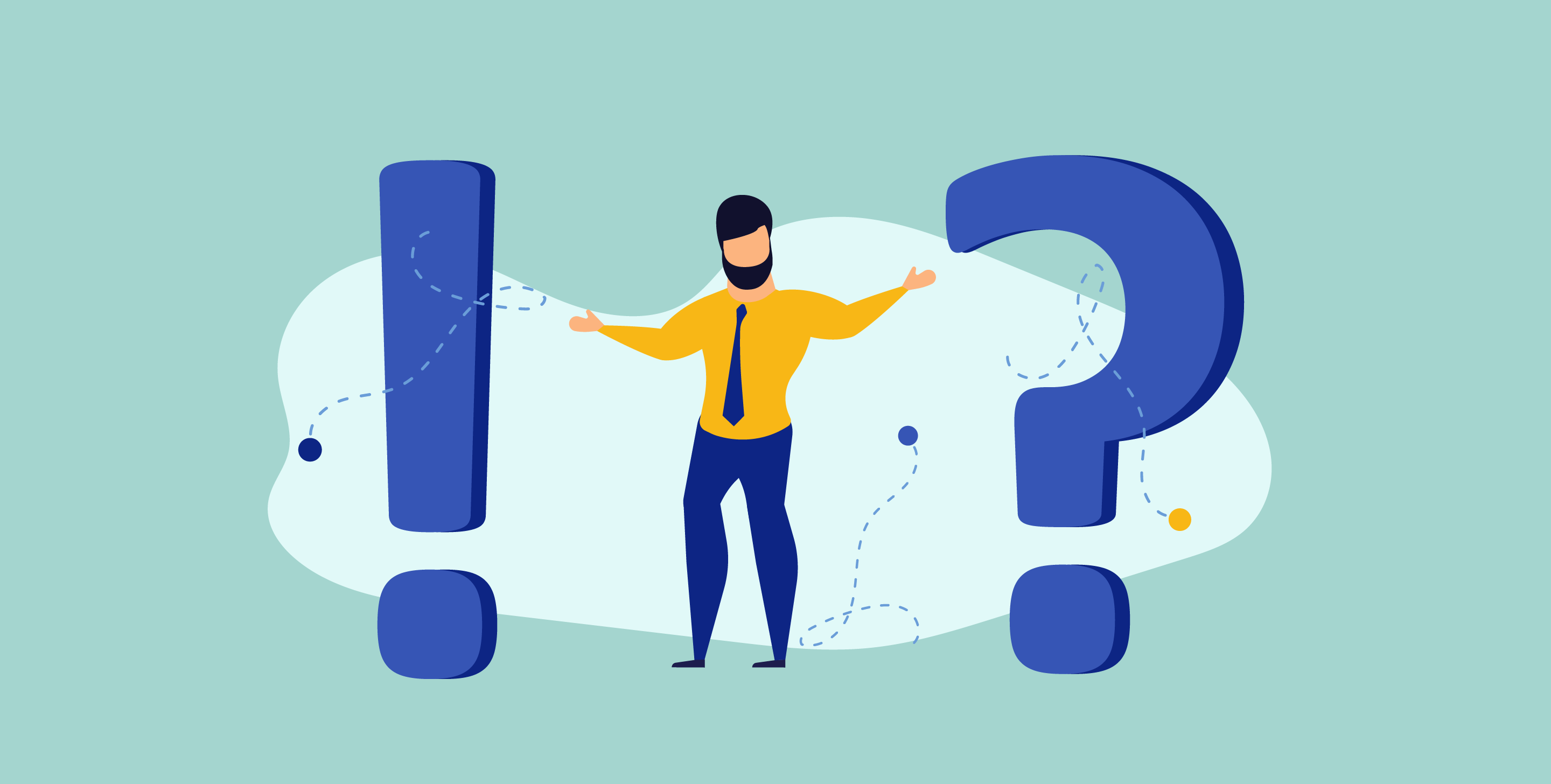Customer Experience
All You Need to Know About Enhancing B2B Customer Experience Excellence
Article written by Kate William
Content Marketer at SurveySparrow
16 min read
19 September 2025

The relationship between customers and businesses is greatly influenced by the kind of experience you offer them. This is especially true of the B2B customer experience.
B2B customers don’t just want you to meet their expectations; they want you to exceed them – every single time. You can only “sweeten the deal” for your customers by offering a superior B2B experience.
In this blog, we will:
- Define the B2B experience
- Know why B2B customer experience management is vital
- Explore the differences between the B2B and B2C customer experience
- List the top 4 metrics for B2B customer experience
- Define the 5 best practices for B2B customer experience management
- FAQs
What is B2B customer experience?
B2B stands for “business-to-business,” and here, the service or product offered is designed for other businesses. IBM, Adobe, Accenture, and Salesforce are solid examples of B2B businesses.
Why is customer experience in B2B important?
No matter which industry you are in, it is incredibly competitive. Your customers will switch to a competitor if you don’t give them a reasonable experience. The word “reasonable” differs based on your industry. If it is a cut-throat one, you cannot be found slacking. Even otherwise, there is no excuse for a “less-than-excellent” experience.
Customers want to feel valued these days, and that too at every single interaction. The room for error is low. One or two bad experiences will forever be etched on business review sites where you get cited as a bad business to work with. You don’t want that.
When you focus on customer experience with a tenacious sense of purpose, you will keep attracting new customers while retaining your existing ones.
Differences between B2B and B2C customer experience
B2C companies are targeted toward a mass audience. On the other hand, B2B businesses target decision-makers from other companies. The decision to purchase a smartphone from Amazon is completely different from adding an email automation tool to your marketing stack.
Let’s look at other major differences between B2B and B2C customer experience.
#1. B2B involves several stakeholders:
B2C sales are usually transactional and don’t require you to build a strong relationship. Building a deep relationship is important to get the decision-makers deeper into the sales funnel. That’s why customer service is critical to conducting a B2B business.
#2. B2B issues are highly complex:
The issues that occur in B2B businesses are usually complex in nature. They will be unique to each customer and require effort and thought to solve them. It might even need multiple teams to solve it. B2C issues don’t have too many elements and can be quickly solved.
#3. Product knowledge is a deal-breaker in B2B sales:
The level of product knowledge required by B2B salespeople is significantly higher than what is expected of their B2C peers. The former needs specialized product knowledge and should be familiar with regulations, standards, and industry-specific practices.
#4. Communication channels are more personalized:
B2C customer service involves digital communication channels such as social media, mobile apps, chatbots, etc. Even though B2B leverages all the above communication types, the interactions are much more personal. That’s mainly because B2B customers expect personalized solutions that meet their specific business needs.
B2C is a fast-paced transaction, and the sales cycle is relatively shorter. The relationship equation between a customer and a B2C sales agent is short-lived. For B2B, the salesperson should demonstrate value throughout the pre-sale buyer journey. The targeting is also spot-on.
4 top B2B customer experience metrics to track
You must concentrate on the indicators that reflect your company’s unique goals. Let’s look at some of the B2B customer experiences that you must compulsorily track.

#1. Customer Satisfaction Score (CSAT):
CSAT measures the satisfaction scores of customers based on their interaction with your organization. It is typically measured with the help of surveys that customers receive after buying your product or interacting with a support agent. If your CSAT scores are high, it means that you are able to meet or surpass customer expectations.
#2. Net Promoter Score (NPS):
One of the simplest and most effective ways to measure customer experience is for NPS to ask a simple question. It measures a customer’s loyalty by asking about the likelihood of them recommending your product or brand to their friends or colleagues.
NPS responses are segmented into three groups: Promoters (scores of 9 and 10), Passives (scores of 7 or 8), and Detractors (scores from 0 to 6).
NPS= (% of Promoters) – (% of Detractors).
Your NPS scores depend on your industry, as certain ones, like telecommunications, have poor scores across the spectrum, while technology/software companies have high scores.
14-day free trial • Cancel Anytime • No Credit Card Required • No Strings Attached
#3. Customer churn rate:
It refers to the percentage at which your customers leave your business. While it is natural for people to choose a different brand after some time, that shouldn’t stop companies from doing everything in their power to make them stay.
Businesses should provide incentives to customers to keep them engaged with your brand. Leverage data analytics tools to find customers who are most likely to leave and take steps to make them stay invested in your brand.
#4. Average resolution rate:
It’s the time taken by your support agent to resolve a customer issue. It is a key indicator of customer experience since customers (read businesses) have SLAs to meet. They cannot afford downtime.
Related: 10 CX Metrics You Need to Track
5 Best Practices for B2B Customer Experience Excellence
1. Make customer experience a priority:
When it comes to B2B businesses, there is an even greater need to be dogged about customer experience. The last thing you want to do is put off your existing customers by not giving them the best after-sales service.
Here’s how you can make B2B experience a priority:
- Create a user-friendly experience for your customers for all interaction touchpoints. The UI/UX should help them easily discover your offerings, provide them with a complete overview of how customers will benefit, and create an immersive experience.
- Set the right expectations with your customers about communication, wait times, delivery, etc.
- Do not oversimplify the issues faced by your customers. Each B2B business will have its unique issues.
- Leverage automation wherever possible, but ensure it is always possible to contact a human agent.
- Provide the freedom for employees to make decisions that will immediately satisfy customers. Educate the employees on the decisions that they can take without consulting higher-ups.
2. Know your customers:
B2B businesses cannot afford to mass-target their audiences. They must create buyer personas to find out their ideal customers. That’s the basics of creating a quality customer experience. Understanding the unique needs of your B2B audience is critical to creating the right message and right offer.
Here are the best strategies to know your B2B customers:
Make a list of your best customers
…Or those whose pain points are solved by your offering. Send surveys to these customers where you ask them a plethora of questions to understand their buyer’s journey, why they purchased from you, and the kind of value they get.
Write down a list of your main competitors.
Get a good idea of their strengths and weaknesses. Find out the marketing plans and strategies that they use to attract customers. How do they interact with their customers? Are there any special offers that they provide for different personas? What value do they promise? What’s their biggest pull according to their customers?
Find out where your customers usually lurk.
What are their favorite types of content? Which social media sites are they active on? Which industry magazines do they follow? Who are the industry influencers they actively listen to?
Find out the niche communities where there is a lot of industry chatter. Identify these places and be an active participant. You will find them discussing the issues they face, the products they use, and the solutions they seek. All this information will give you a better understanding of your target audience.
Using the above information, you can easily recognize what your customers want.
3. Provide customized solutions:
Creating a specific offer that is tailor-made to the requirements of one particular customer is pivotal to increasing customer experience. When customers realize that the offer in front of them is exactly what they want, it will increase sales and a better conversion rate.
Here’s how you can offer B2B customized solutions at scale:
Web content:
The content of your website should be compelling enough for them to stay hooked to your offering.
Make sure the website content is personalized to the website visitor. It can be done by personalizing the CTAs, writing content for each persona, using automation for dynamic content placements, repurposing existing content, etc.
Account-based marketing:
One of the best ways to provide personalized care to your target accounts is the use of account-based marketing. For the uninitiated, ABM focuses on certain accounts, where the accounts and individuals are engaged across the different stages of the buyer’s journey.
To leverage ABM, you must create personas based on business attributes. For example, position in the organization, decision-making power, industry, pain points, geographical location, etc.
Here’s how you create a successful ABM campaign:
- Identify your target accounts that will give high ROI.
- Research these accounts and find out their needs and pain points.
- Develop custom marketing campaigns for each of these target accounts.
- Launch your campaigns for the target accounts.
- Analyze and track the success of your ABM campaign.
Micro-targeting audiences:
Even digital ads these days have become dynamic. Advertisers can use millions of data points from various sources like Google, Facebook, review sites, etc.
Some data points you can leverage are search results, bookmarks, devices used, location, messages, posts, and comments sent on social media, call history, downloaded files, browsing history, etc.
Instead of creating generic ads, you can create one-to-one personalized ads that target micro audiences. Additionally, you can personalize the post-click landing pages for the B2B customer.
Social media:
Social media networking platforms offer a variety of demographic information that helps prospects based on intent signals. It would be best if you concentrated on sites where your prospective customers lurk.
Engage with trending topics in your industry, create conversations, reply to conversation threads, leverage Ask Me Anything (AMA) events, etc.
4. Focus on training employees:
B2B customers want personalized service. They want to ensure that their decision to buy from you is well considered. Your employees are the ones who interact with your customers, and that’s precisely why you must focus on training them.
Here’s how you can make your employees provide the best experience for your prospective customers:
- Make sure they are always taught to be empathetic to customers. You must treat your employees right, which will surely reflect how the former will treat your customers.
- Focus on the type of customers your employees will be dealing with. You can train employees to interact with each other according to their different personas.
- Encourage your employees never to assume anything when a customer comes with an issue.
- Teach them how to solve issues quickly with the least friction. Timely response and quick delivery should always be a priority.
Investing in your employees will create a dramatic effect on customer experience. They are the ones who will help you stand out from the competition.
5. Collect customer feedback:
At its core, the simple act of collecting feedback from customers makes them feel valued. It helps you step back and see your offering with a new perspective.
Businesses get to understand how B2B customers think and what they feel while using the product, and it gives you actionable insights on what works well.
Here are a few ways you can collect customer feedback:

- Interviews and focus groups are great methods to collect feedback from customers. You can get detailed opinions since you have ample time to get their perspectives.
- To collect real-time information from customers, you can train chatbots.
- You can use online survey tools like SurveySparrow to collect customer feedback. Moreover, you can embed these forms on a website, share them on social media, insert them in-app, etc.
- Even a simple phone call can obtain feedback. Moreover, you can resolve problems or solve concerns right away.
The act of collecting feedback alone doesn’t help. It would be best if you closed the feedback loop.
What’s that? Every feedback that you get should be looked into. If you can immediately work on the input, do that. It will bring immediate rewards as customers will be thrilled to see their feedback being acted upon.
Collect feedback and close the loop quickly and effectively. Try SurveySparrow for free.
14-day free trial • Cancel Anytime • No Credit Card Required • No Strings Attached
Wrapping up
In the B2B space, customer experience is critical. No matter how good your offering is, if your customer experience is sloppy, it will immediately turn away your paying customers. Businesses should refine the customer experience at each opportunity.
B2B Customer experience management should be at the core of your operations. Providing a great experience should never be an afterthought.
If you want to collect customer feedback to provide a greater customer experience, you can use a tool like SurveySparrow to get started. Contact us to understand how our customer experience management tool can change how your B2B customers experience your brand.

Explore Deeper Customer Insights with SurveySparrow
A personalized walkthrough by our experts. No strings attached!
FAQs
What are the best practices in B2B services?
Let’s look at some of the best practices while providing B2B services (apart from the ones that we’ve mentioned in this article):
- Business buyers expect immediate responses provide real-time responses to customers ‘ questions, complaints, and queries.
- Use Voice of Customer data to improve your business operations continuously.
- Leverage social media to create meaningful experiences with clients. Share useful and engaging content on social media platforms to inform them about the benefits of working with you.
- Businesses want to know what they can expect when they sign up with you. They want to receive the same level of experience, service, and support.
What is customer experience in B2B?
It refers to how businesses or organizations, who are your customers, experience your services, products, or brand. Every interaction with your brand affects how prospective customers feel about your brand, including their purchasing decisions. Your business success is directly proportional to the B2B customer experience that you offer.
How do you keep a B2B customer engaged?
Encouraging your customers to stay engaged with your brand through various channels helps keep them engaged. Create interactions that help you build close relationships with your customers.
Here are a few strategies to keep your customers engaged:
- Take the time to build relationships with prospective customers.
- Create different types of content, especially videos, since they have the highest impact.
- Collect customer feedback at multiple touchpoints and act on the feedback received.
- Increase engagement with the help of gamification.
- Leverage social proof in your marketing materials.
- Build a community of close-knit customers.
What is the B2B customer lifecycle?
Customer lifecycle describes the steps the average customer goes through when considering a particular product or service. There are five distinct stages in the B2B customer lifecycle:
- Reach
- Acquisition
- Conversion
- Retention
- Loyalty
How do I create a B2B customer journey map?
The customer journey map visually represents every interaction with a brand, including a product or service. Here are seven steps to creating a B2B customer journey map:
-
- Have specific objectives for the map. Make sure these goals are specific to your business.
- Define your customer personas. Remember that the end users of your B2B product are not necessarily those who make the purchasing decisions. Your B2B personas are a lot more nuanced than B2C personas.
- Define the various B2B customer journey stages and what your customers will experience in each stage.
- Identify every possible touchpoint in the customer journey.
- Determine the major points of friction.
- Use customer journey mapping tools to measure and analyze the success of the customer journey.
- Find out the areas for improvement.
Are you looking for a customer journey mapping tool? Try SurveySparrow for free.
14-day free trial • Cancel Anytime • No Credit Card Required • No Strings Attached

Make your customers feel heard. Turn feedback into loyalty with SurveySparrow's CX platform.
Kate William
Related Articles

Customer Experience
12 Must Ask Questions for Your Customer Support Surveys
14 MINUTES
20 October 2020

Customer Experience
How To Use AI for Better Customer Engagement to Boost Sales
11 MINUTES
17 August 2019

Customer Experience
Customer Service vs Customer Experience: Definition, Differences & Examples
9 MINUTES
20 June 2023

Customer Experience
10 Customer Retention Tips that Guarantee Your Customer Will Come Back To You
10 MINUTES
27 August 2018
